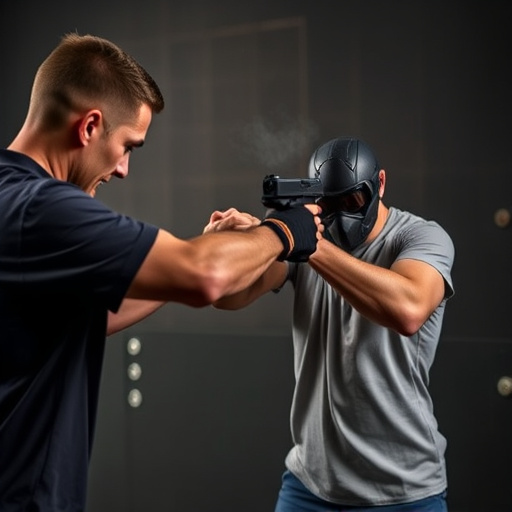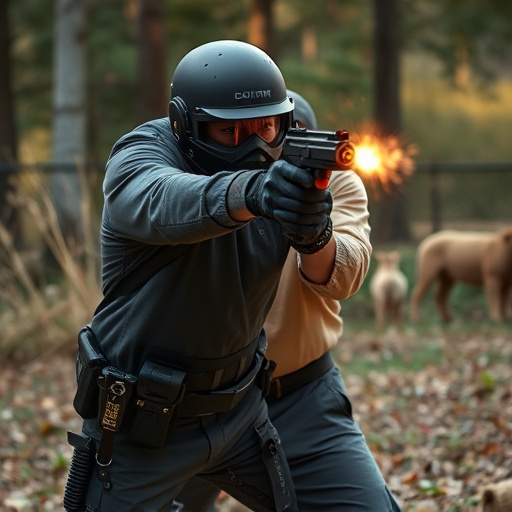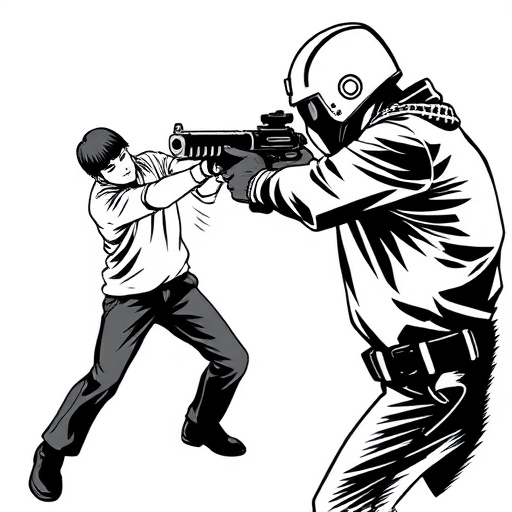High-powered stun guns for sale temporarily incapacitate individuals through electric shock, with effectiveness and paralysis duration varying based on target size, body composition, probe placement, environmental conditions, and device power output. Legal implications necessitate transparency and safety in deployment, leading to stricter regulations and redesigned products to reduce risks of prolonged immobilization, promoting responsible usage.
In today’s world, understanding the implications of law enforcement tools like tasers is crucial. This article explores the duration of paralysis resulting from taser deployment, a critical aspect often under scrutiny. We delve into the immediate effects of tasers and factors that influence the time individuals remain paralyzed. Additionally, we examine legal considerations surrounding high-powered stun guns for sale, shedding light on their potential impact and the ongoing debate around their use.
- Understanding Taser Deployment and Its Immediate Effects
- Factors Influencing Paralysis Duration After Taser Use
- Legal Considerations and Impact on High-Powered Stun Guns for Sale
Understanding Taser Deployment and Its Immediate Effects

Tasers, or stun guns, are high-powered devices designed to temporarily incapacitate a person through electric shock. When deployed, they fire two thin probes connected to cables that deliver a powerful electrical current, disrupting muscle control and causing immediate paralysis. The effects of a Taser strike are swift and intense, rendering the target immobile for several seconds to minutes, depending on the model and the duration of the discharge. This brief period of paralysis is intended to enable law enforcement or security personnel to secure or subdue an individual without the use of lethal force.
The duration of this paralysis is a key consideration when evaluating Taser deployment. While manufacturers specify varying stun times, the actual length of incapacitation can be influenced by factors such as target size and body composition, probe placement, and environmental conditions. Understanding these variables is essential for tactical planning and ensuring the safe and effective use of high-powered stun guns for sale in various situations, from law enforcement operations to private security measures.
Factors Influencing Paralysis Duration After Taser Use

The duration of paralysis after Taser deployment can vary significantly and is influenced by several factors. One key consideration is the model and power output of the stun gun used; high-powered stun guns for sale often claim to deliver more intense jolts, potentially extending the immobilization period. However, it’s important to note that the human body’s response to such shocks can vary, leading to differing levels of paralysis even with similar devices.
Other factors include the target’s physical attributes, such as muscle mass and overall health, which can affect how quickly or slowly they recover from the stun. The position of the electrodes on the Taser also plays a role; contacting more sensitive areas might result in prolonged paralysis. Additionally, environmental conditions, like temperature and humidity, could potentially impact the effectiveness and duration of the stun’s effects.
Legal Considerations and Impact on High-Powered Stun Guns for Sale

The duration and effects of paralysis resulting from taser deployment are significant considerations in legal contexts, especially regarding high-powered stun guns for sale. Legal experts argue that manufacturers and sellers must provide clear and accurate information about the potential consequences of their products to ensure public safety. Many countries have implemented regulations that mandate labeling and user manuals detailing the risks associated with stun devices, particularly when it comes to prolonged paralysis.
These legal considerations are driving a shift in the market for high-powered stun guns for sale. Manufacturers are increasingly focusing on developing more sophisticated and safer designs that minimize the risk of excessive or prolonged immobilization. As a result, consumers can expect better transparency and product standards, ensuring that high-powered stun guns for sale meet stricter safety guidelines and contribute to a responsible use of such devices.
The duration of paralysis resulting from Taser deployment varies based on multiple factors, including the model used, voltage output, and individual physiological differences. While these devices are marketed as non-lethal, their impact can be significant and lasting, especially with prolonged exposure. As the market for high-powered stun guns for sale continues to grow, it’s crucial to understand the legal implications and ensure responsible use. Awareness of the effects and potential risks is essential to navigate this complex landscape, fostering a more informed approach to public safety.
